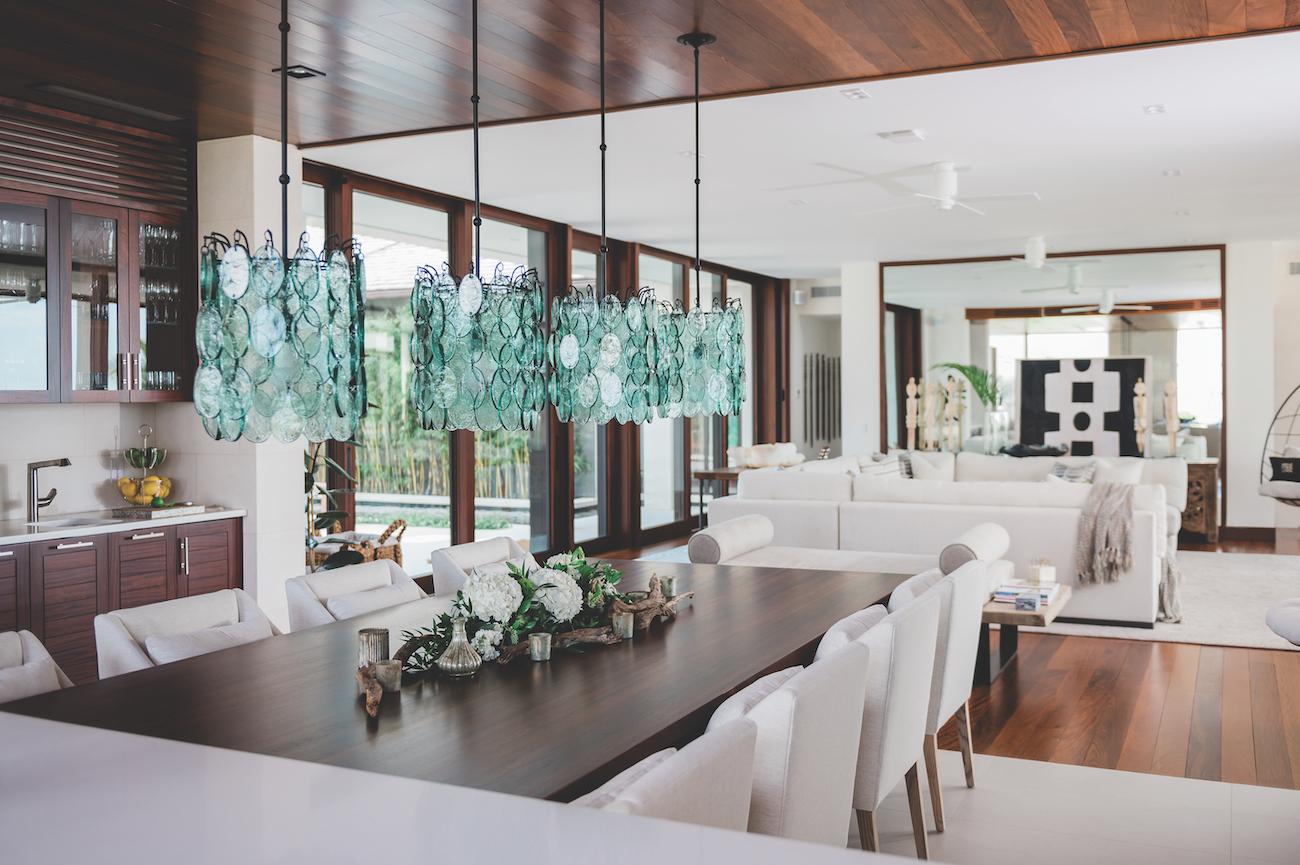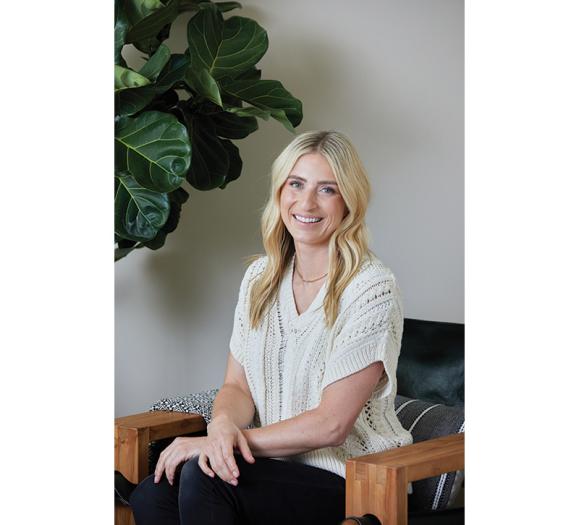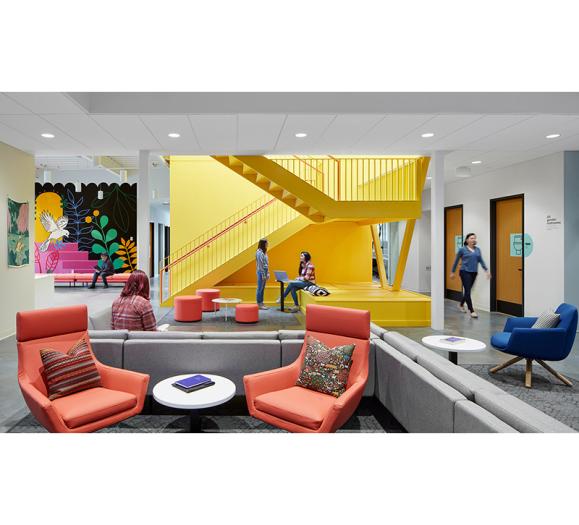When I spoke with Christi Barbour, co-founder and half of the leadership team at Barbour Spangle Design, she had just moved into new offices at Congdon Yards, a former hosiery factory turned offices/residences in the heart of downtown High Point, NC. Sitting amidst boxes as the company moves into their new digs during a pandemic is sort of surreal, Barbour explains, but at the same time, it’s also a symbol of the trajectory her design business, with partner Christi Spangle, has taken.
High Point has been and continues to be the home of Barbour’s design career, even if it looks somewhat different now than it did when she started her own firm in 1997. It was 2000 when she partnered with Spangle.
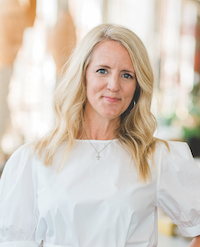
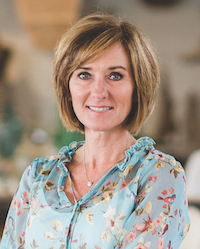
Christi Barbour and Christi Spangle
While making a move during a pandemic seems somewhat counterintuitive, Barbour knows it was the right move for her company, even with the uncertainty of COVID’s impact on her business. “This snowball was halfway down the mountain when the pandemic hit. We fell in love with the building and the story and the history it represents,” she says. “It’s a community/campus that really embraces collaboration, community and creativity. Good things are going to come out of this.”
High Point is the right place for Barbour to be, as so much of the work her company has done has been in showroom design. Much like the new Congdon complex, moving from one type of design to the next — showroom and commercial to residential and back again — has been the story of Barbour’s career, even though in the beginning, she thought she needed to focus on and be exceptional at one thing to succeed.
Barbour started her career in photo styling, even though she’d gotten her degree in design. She credits that role, however, with learning scale and proportion and color. Product photography required accuracy and speed. Following that, she began an internship with a design firm, where she worked for several years. That company specialized in showroom and commercial design. “This intrigued me. Along my career, for years, I thought I had to specialize in one area to be good at what I did,” says Barbour. “Here I learned I could do more than one thing.” She worked in this role for several years until one of her boss’s clients offered to hire her firm full time, and her boss recommended Barbour for the job. “I was responsible for the design of that company’s showrooms and retail stores.” More than that, however, her new boss took her under his wing and gave her exposure to product development, which expanded her skills by helping her understand the product development process and how it played into showroom and retail design.
Making Her Way
When this role ended, Barbour knew it was time to go out on her own. Fortunately, she says, she had a supportive husband who encouraged her to this end. In April 1997, Barbour put up her shingle: Barbour Design Group. “I went back to product styling and showroom design [in High Point] to build rapport,” she says, noting that she also built contacts through the home furnishings industry that led to more showroom work and commercial projects as well.
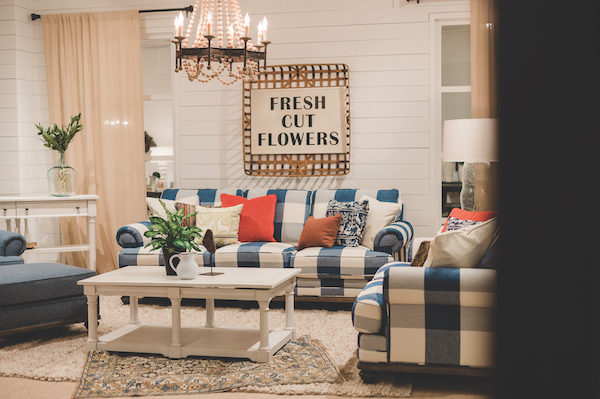
At the start of 2000, she partnered with Spangle to form a “new kind of design firm, collaborative and inclusive, not so single vision, so to speak.” Through this partnership, which continues today, Barbour found a world of much bigger opportunities.
In addition to designing showrooms in High Point, the company slowly grew to incorporate a wide variety of commercial projects, including higher education and private school design, corporate office buildings and medical spaces. “Commercial is a pretty large umbrella for us,” Barbour explains, adding that creating public spaces in these buildings with the end user in mind not only gave them enough work, it put them in front of C-suite executives who were interested in hiring thep partners for their residential projects. “We turned that down for a long time,” says Barbour, “but those were our ideal clients.” To be able to expand into residential comfortably, Barbour and Spangle hired a designer with expansive residential experience. “That’s when we put our stake in the ground,” she says, adding residential design to the portfolio.
Cross-Channel Expertise
What Barbour eventually realized is that showroom and commercial design actually informed the team’s residential design in a positive way. “I think showroom design actually helped us to see what kind of designers we are,” she says. “We’ve had to learn to set diverse product lines up so they are aspirational and inspirational to buyers and displayed in the right environment. We started our careers being exposed to that showroom design and being able to dig in and create a design reflective of the company.”
The partners have carried that sense of understanding a client’s needs to their residential clients as well. “There are designers out there who have a very specific point of view. People hire them for that,” Barbour says. “We want to know who our clients are, whether a brand or a family, so we can bring that personality to life — with a unique twist. When you walk into Sally’s home, it will look and feel just like Sally.”
Barbour has realized through the years that she doesn’t have to excel at just one thing to be legitimate. Diversification for her design firm has been a blessing, helping her to apply the principles she learns in one area in a way that impacts all of the company’s designs in a good way. “We are truly resimercial,” she says. “We don’t want commercial offices to feel so stuffy and tidy. In the residential sector, we’d been bringing layers in from our commercial background long before that was a term. Our showroom clients actually love that we do residential design because we are designing for who they are trying to sell to. We know what the general public is looking for because we are designing for the end-use consumer.”
In showroom design, Barbour continues, “It’s important to create spaces that draw the reaction of, ‘I could put that in my home.’ If a retailer wants to know what we’ve used in the space, we’ve done our jobs well. We understand when we design showrooms, it’s to sell products.” To create these spaces, Barbour draws from her work with hospitality-type spaces to create showrooms where there’s room to breathe, stop and talk, and build relationships. “There need to be pause points so customers can absorb everything they are seeing. It’s an intentional part of our design philosophy and how we create spaces,” she says.
When asked where she sees the most influence from one channel to the other, however, Barbour suggests that the influences from showroom and commercial inform residential design more than the other way around, whether that’s in the commercial fabrics and products, or the way a space such as a bathroom or kitchen will function optimally. While these influences may not be obvious, having knowledge in these different channels makes a difference, upending Barbour’s original ideas that to be legitimate you need to be a specialist in one area.
For this company, as they build their business further, it’s been the residential side that has kept them afloat during the COVID-19 pandemic. “The residential portion of our business has taken a significant uptick and has allowed us to keep our team employed,” she says. The showroom side of the business took a hit in 2020, but the anticipation for spring High Point Market, now slated for June, and the fall market in October is promising.
Barbour Spangle Design is using that market “lull” to get their new space, which is literally in the heart of downtown High Point, all ready to roll so they are available to continue to help the home furnishings companies they service continue to be relevant.
“We’re really excited about our future,” says Barbour. “The future is bright for all of us in this industry.”



